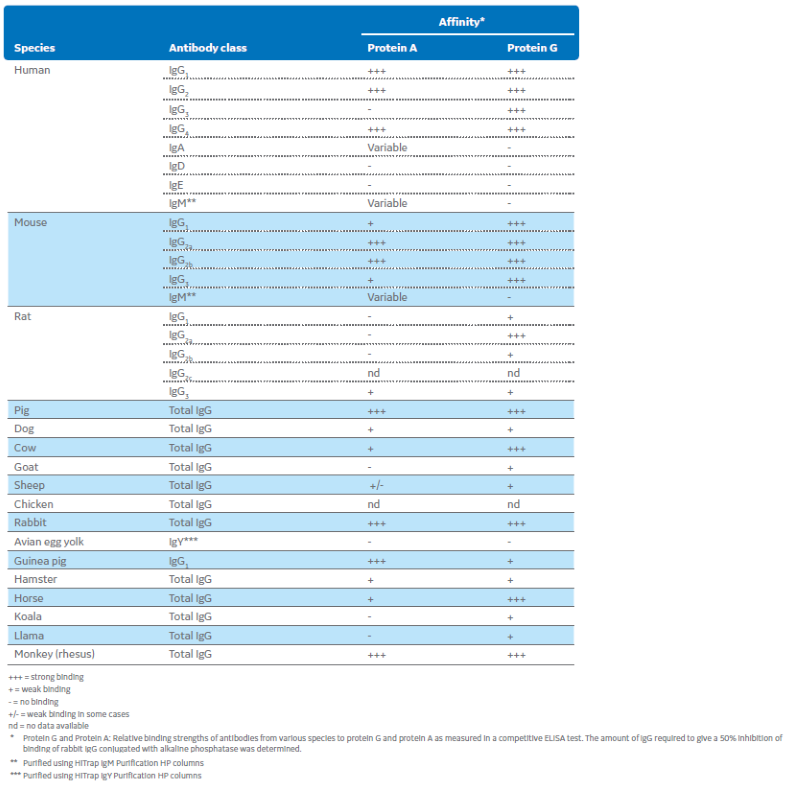Murphy’s law has cast a dark shadow over your project. You’re about to purify your mAb, and you need it to “just work.” It will probably be OK to use your lab mate’s affinity column. But how can you be sure? Clean it with NaOH, as long as your resin can handle the base.
Why clean an antibody affinity column?
As with any shared column, you are at the mercy of those who have gone before you. If antibody elution wasn’t complete in the previous run, your purified sample could get contaminated with traces of your colleague’s antibody. And you might not even know it. One option is to clean a shared column between runs using a reagent such as 6 M guanidine hydrochloride. However, Gua-HCl is highly viscous and requires low flow rates. Other drawbacks are cost and difficulty determining when the chemical has been washed out after cleaning.
Standard ligands don’t hold up well to base
Sodium hydroxide is commonly used to clean and sanitize chromatography resins when purifying biomolecules for therapeutic use. It’s cheaper and more convenient to handle than other cleaning agents. Additional benefits are that removal after cleaning is easily determined by checking the effluent pH, and disposal is simple. Unfortunately, standard protein G and protein A chromatography resins don’t hold up well to base – the ligand is easily damaged, which reduces antibody binding and recovery with each cleaning.
To ensure that antibody recovery doesn’t decrease and cross-contamination isn’t introduced, you can either choose a new column for each new antibody to be purified or use HiTrap MabSelect Sure with confidence that you get the following benefits:
- Maintained antibody recovery
- Minimized risk of antibody cross-contamination
- Fewer columns are needed (reduces costs)
The alkali-resistant ligand makes all the difference
In order to maximize the number of times a column can be recycled, you need a resin that can stand up to harsh treatment. The protein A ligand in our MabSelect SuRe antibody resin has been engineered for increased tolerance to alkaline conditions. This resin has been shown to have retained dynamic binding capacity after repetitive cleaning-in-place cycles with sodium hydroxide.The resin is available loose or prepacked into ready-to-use columns.
Ready-to-use columns for small-scale antibody purification
HiTrap columns are a convenient format for small-scale purifications. They are available in 1 ml or 5 ml sizes. Features of HiTrap MabSelect SuRe columns include:
- Simple to operate with a syringe, pump, or chromatography system
- Rigid, high-flow agarose matrix compatible with 0.5 M sodium hydroxide
- Dynamic binding capacity (DBC) is approximately 30 mg human IgG/ml medium
- Monoclonal and polyclonal antibodies can be purified, as long as they bind well to protein A*
* Relative binding strengths of protein A and protein G

Learn more about MabSelect SuRe and our other antibody affinity purification products, or download our in-depth antibody affinity chromatography handbook.
Has Murphy’s law ever cast a shadow when you were purifying an antibody? Please share your story here.